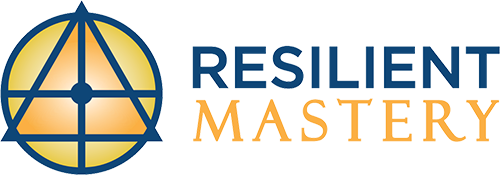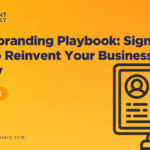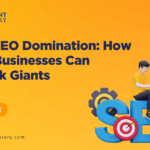Introduction: From Hype to Implementation
AI is no longer a buzzword — it’s a competitive necessity. In 2025, the businesses that thrive aren’t those dabbling with AI tools, but those that integrate AI systematically across their operations.
Yet many companies still ask: Where do we start?
This guide lays out a 7-phase roadmap — a repeatable model businesses can follow to evolve into fully AI-powered enterprises.
Phase 1: Audit and Awareness
Before AI integration begins, businesses must understand where they are.
Key Actions
- Map workflows: Where is time wasted on repetitive tasks?
- Identify pain points: Customer delays, bottlenecks, data silos.
- Assess readiness: Do teams have the digital literacy to adapt?
📊 Pro Tip: Create a “time audit” of employee tasks — 30–50% of activities can often be automated with AI.
Phase 2: Vision and Strategy
AI without strategy is chaos. Define your why before the how.
Guiding Questions
- What role should AI play in our business?
- Are we using AI to cut costs, scale revenue, or both?
- How does AI align with our brand identity and customer promise?
Example: A professional services firm decides their AI focus is client onboarding automation, freeing staff for high-value advisory work.
Phase 3: Tool Selection and Pilot Projects
Instead of going all-in, start small with pilot projects.
AI Tool Categories
- Marketing: Predictive analytics, ad optimization.
- Sales: CRM automation, lead scoring.
- Operations: RPA for invoicing, scheduling, compliance.
- Customer Service: Chatbots, sentiment analysis.
📊 Stat: Companies running pilot AI projects before full rollout experience 38% fewer failures.
Phase 4: Integration Into Workflows
AI isn’t effective if it’s siloed. It must integrate with core systems.
Examples
- AI chatbots feeding directly into CRMs.
- Predictive analytics syncing with ad platforms.
- Automated reporting connected to BI dashboards.
Phase 5: Training and Human Alignment
The biggest barrier to AI adoption isn’t technology — it’s people.
Training Essentials
- Upskill staff on how to work with AI, not against it.
- Clarify human vs. machine responsibilities.
- Build trust by showing AI as a collaborator, not a replacement.
📊 Pro Tip: Position AI as “removing the grunt work” so humans can focus on strategy, creativity, and empathy.
Phase 6: Scaling Across the Organization
Once pilots succeed, it’s time to scale AI adoption.
Scaling Strategies
- Replicate successes in new departments.
- Standardize AI playbooks for consistency.
- Automate cross-departmental workflows (sales + marketing + service).
Example: A retail chain scales AI from predictive inventory to dynamic pricing and personalized customer recommendations.
Phase 7: Measurement and Continuous Evolution
AI integration isn’t a one-time project. It’s a continuous evolution.
Metrics to Track
- Efficiency gains (time saved, reduced costs).
- Revenue impact (higher sales, LTV).
- Customer satisfaction improvements.
- Employee productivity increases.
Evolution Mindset
- Update AI tools regularly (they evolve fast).
- Experiment with new use cases.
- Align adoption with emerging trends (voice AI, generative design, IoT integrations).
Case Studies: Businesses Following the Roadmap
Case 1: E-commerce Retailer
- Phase 1: Identified checkout abandonment as key problem.
- Phase 3: Piloted AI recommendation engine.
- Phase 5: Trained staff on data-driven personalization.
Result: 25% increase in repeat purchases.
Case 2: Professional Services Firm
- Phase 1: Audited onboarding delays.
- Phase 2: Strategy focused on client experience.
- Phase 4: Integrated AI onboarding assistant into CRM.
Result: 40% faster client onboarding, higher satisfaction.
Case 3: Local Healthcare Practice
- Phase 3: Piloted chatbot for scheduling.
- Phase 6: Scaled AI into patient follow-ups and reminders.
Result: 60% reduction in no-shows.
The AI-Powered Business Checklist
- ✅ We’ve audited workflows for automation opportunities.
- ✅ We’ve defined a clear AI strategy.
- ✅ We’ve piloted AI tools with measurable goals.
- ✅ We’ve integrated AI into existing systems.
- ✅ We’ve trained staff for human + AI collaboration.
- ✅ We’ve scaled AI adoption across departments.
- ✅ We’re tracking ROI and evolving continuously.
Conclusion: The Road Ahead
Becoming an AI-powered business doesn’t happen overnight — it happens in phases. The companies that succeed aren’t the ones who buy the most AI tools, but the ones who integrate them strategically, train their people, and evolve continuously.
In 2025, the question isn’t “Should we use AI?” — it’s “How quickly can we implement it before competitors leave us behind?”
Resilient Mastery helps businesses navigate every phase of AI adoption — from pilot projects to organization-wide integrations.




